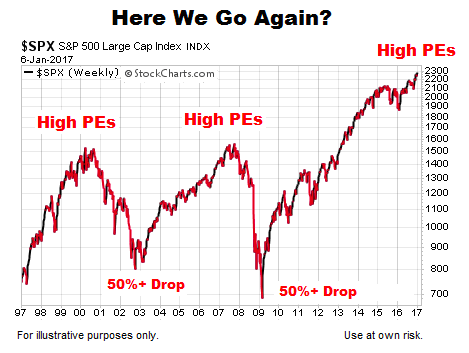Winterwatch: Essential Equipment For Birdwatching In Cold Weather

Table of Contents
Staying Warm: Essential Clothing for Winter Birdwatching
Winter birdwatching demands proper attire. Shivering hands won't hold steady binoculars, and a cold core will limit your enjoyment. Layering is the key to staying comfortable and adaptable to changing conditions.
Layering is Key
The layering system is your best defense against the cold. It allows you to adjust your warmth based on activity level and weather changes.
- Base Layer (Thermal Underwear): Opt for moisture-wicking materials like merino wool or synthetic fabrics. These draw sweat away from your skin, keeping you dry and warm. Avoid cotton, which retains moisture and can lead to chills.
- Mid-Layer (Insulating Layer): A fleece jacket or a lightweight down jacket provides excellent insulation. This layer traps warm air close to your body, adding a crucial layer of warmth.
- Outer Layer (Shell Layer): A waterproof and windproof jacket is crucial for protecting you from the elements. Look for breathable fabrics to prevent overheating while staying dry.
Choosing the right footwear is equally important. Waterproof boots with good insulation are essential. Look for features like Thinsulate or similar insulation to keep your feet warm and dry, even in deep snow or slush.
Protecting Extremities
Your extremities are most vulnerable to the cold. Protecting your hands, head, and feet is paramount for a pleasant birdwatching experience.
- Waterproof Gloves or Mittens: Mittens generally offer better warmth than gloves, but gloves allow for better dexterity if you need to adjust your equipment. Consider lined waterproof options.
- Warm Hat: A warm, preferably wool or fleece, hat is essential. For extreme cold, a balaclava offers extra protection for your face and neck.
- Thick, Warm Socks: Wool or synthetic socks are ideal for keeping your feet warm and dry. Consider wearing two pairs of thin socks for added insulation.
Hand and foot warmers are a valuable addition, especially during prolonged periods of cold weather or inactivity. They provide a quick boost of warmth when you need it most.
Optics for Winter Birdwatching: Binoculars and Spotting Scopes
High-quality optics are crucial for successful winter birdwatching. Low light conditions and potentially greater distances to birds necessitate careful consideration of your equipment.
Choosing the Right Binoculars
Binoculars are your primary tool for observing birds. Several factors influence their suitability for winter birdwatching:
- Magnification: 8x42 or 10x42 binoculars are popular choices, offering a good balance between magnification and field of view.
- Objective Lens Size (the second number): A larger objective lens gathers more light, crucial in low-light winter conditions.
- Field of View: A wider field of view makes it easier to locate and track birds.
Image stabilization is a highly beneficial feature in binoculars, especially for handheld use in cold conditions. [Consider linking to specific recommended binoculars here, e.g., "Check out our recommended binoculars for winter birdwatching here: [link]"]
Spotting Scopes for Distant Views
For observing birds at a significant distance, a spotting scope is invaluable. They offer much higher magnification than binoculars.
- Magnification: Spotting scopes typically offer much higher magnification (e.g., 20x-60x).
- Tripod Compatibility: A sturdy tripod is essential for supporting a spotting scope, especially in windy conditions.
- Cold Weather Use: Ensure your spotting scope is compatible with cold weather conditions to prevent condensation and performance issues.
Using a tripod provides the necessary stability for higher magnification, improving image quality and reducing hand shake.
Other Essential Winter Birdwatching Gear
Beyond clothing and optics, other equipment significantly enhances your winter birdwatching experience.
Waterproof Bags and Cases
Protecting your valuable equipment from the elements is crucial.
- Waterproof Backpack: A waterproof backpack protects your clothes, binoculars, and other items from snow and rain.
- Cases for Binoculars and other sensitive equipment: Hard cases provide additional protection against impacts and moisture.
Guidebooks and Field Guides
Having access to up-to-date information on winter bird species is critical.
- Regional Bird Guides: Identify the bird species likely to be in your area during winter.
- Bird Identification Apps: Apps like Merlin Bird ID can aid in bird identification.
Other Important Items
Several other items ensure a comfortable and safe birdwatching experience:
- Snacks and Drinks: Pack high-energy snacks and a thermos of hot tea or coffee to keep you fueled and warm.
- First-Aid Kit: Be prepared for minor injuries.
- Sunscreen: Even on cloudy winter days, the sun's reflection off the snow can cause sunburn.
- Insect Repellent: Depending on your location, insects might still be present.
Conclusion
Winter birdwatching is a unique and rewarding experience, but proper preparation is essential. By investing in the right winter birdwatching equipment – from warm clothing and high-quality optics to essential accessories – you can ensure a comfortable and successful outing, maximizing your chances of spotting those elusive winter birds. So, gather your essential winter birdwatching equipment and get ready to enjoy the beauty of nature in the colder months! Remember to check the weather forecast before you go, and always prioritize safety. Happy winter birdwatching!

Featured Posts
-
 Nhl Draft Lottery Islanders Win Top Selection Sharks Second
May 13, 2025
Nhl Draft Lottery Islanders Win Top Selection Sharks Second
May 13, 2025 -
 Understanding High Stock Market Valuations Insights From Bof A
May 13, 2025
Understanding High Stock Market Valuations Insights From Bof A
May 13, 2025 -
 Jannes Horn Von Eintracht Braunschweig Zum Rivalen Hannover 96
May 13, 2025
Jannes Horn Von Eintracht Braunschweig Zum Rivalen Hannover 96
May 13, 2025 -
 Aryna Sabalenkas Miami Open Victory 19th Wta Title
May 13, 2025
Aryna Sabalenkas Miami Open Victory 19th Wta Title
May 13, 2025 -
 Senior Travel And Activities Calendar
May 13, 2025
Senior Travel And Activities Calendar
May 13, 2025
